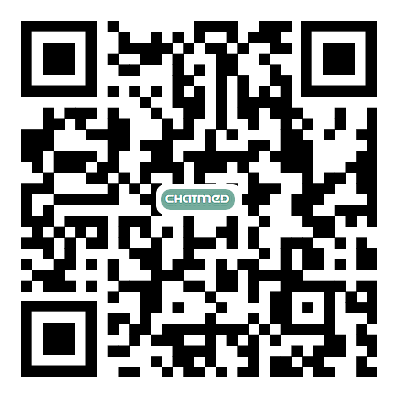REFERENCES
1. Turner A. Mobile user statistics: discover the number of phones in The World & Smartphone Penetration by Country or Region. Bankmycell 2023. Available from: https://www.bankmycell.com/blog/how-many-phones-are-in-the-world [Last accessed on 24 Feb 2023].
2. Cao W, Milks MW, Liu X, et al. mHealth Interventions for self-management of hypertension: framework and systematic review on engagement, interactivity, and tailoring. JMIR Mhealth Uhealth 2022;10:e29415.
3. World Health Organization. mHealth: new horizons for health through mobile technologies. Global Observatory for eHealth Series Vol 3. 2011. Available from: https://www.cabdirect.org/cabdirect/abstract/20113217175 [Last accessed on 24 Feb 2023].
4. Cao WR, Shakya P, Karmacharya B, Xu DR, Hao YT, Lai YS. Equity of geographical access to public health facilities in Nepal. BMJ Glob Health 2021;6:e006786.
5. Beratarrechea A, Lee AG, Willner JM, Jahangir E, Ciapponi A, Rubinstein A. The impact of mobile health interventions on chronic disease outcomes in developing countries: a systematic review. Telemed J E Health 2014;20:75-82.
6. PATH. The Iinnovation Ccountdown 2030. Reimagining global health.30 high-impact innovations to save lives. NORAD, USAID,PATH; 2030. Available from: https://www.path.org/resources/innovation-countdown-2030-reimagining-global-health/ [Last accessed on 24 Feb 2023].
7. Bhandari B, Narasimhan P, Vaidya A, Subedi M, Jayasuriya R. Barriers and facilitators for treatment and control of high blood pressure among hypertensive patients in Kathmandu, Nepal: a qualitative study informed by COM-B model of behavior change. BMC Public Health 2021;21:1524.
8. World Health Organization. Hypertension care in Thailand: best practices and challenges, World Health Organization. Country Office for Thailand 2019. Available from: https://apps.who.int/iris/handle/10665/330488 [Last accessed on 24 Feb 2023].
9. Chow CK, Redfern J, Hillis GS, et al. Effect of lifestyle-focused text messaging on risk factor modification in patients with coronary heart disease: a randomized clinical trial. JAMA 2015;314:1255-63.
10. Bobrow K, Farmer AJ, Springer D, et al. Mobile phone text messages to support treatment adherence in adults with high blood pressure (SMS-text adherence support [StAR]): a single-blind, randomized trial. Circulation 2016;133:592-600.
11. Bhandari B, Narasimhan P, Vaidya A, Jayasuriya R. Theory-based mobile phone text messaging intervention for blood pressure control (TEXT4BP) among hypertensive patients in Nepal: study protocol for a feasibility randomised controlled trial. BMJ Open 2020;10:e040799.
12. Bhandari B, Narasimhan P, Jayasuriya R, Vaidya A, Schutte AE. Effectiveness and acceptability of a mobile phone text messaging intervention to improve blood pressure control (TEXT4BP) among patients with hypertension in nepal: a feasibility randomised controlled trial. Glob Heart 2022;17:13.
13. Bhandari B, Schutte AE, Jayasuriya R, Vaidya A, Subedi M, Narasimhan P. Acceptability of a mHealth strategy for hypertension management in a low-income and middle-income country setting: a formative qualitative study among patients and healthcare providers. BMJ Open 2021;11:e052986.
14. Khatib R, Schwalm JD, Yusuf S, et al. Patient and healthcare provider barriers to hypertension awareness, treatment and follow up: a systematic review and meta-analysis of qualitative and quantitative studies. PLoS One 2014;9:e84238.
15. Kaplan WA. Can the ubiquitous power of mobile phones be used to improve health outcomes in developing countries? Global Health 2006;2:9.
16. Hall CS, Fottrell E, Wilkinson S, Byass P. Assessing the impact of mHealth interventions in low- and middle-income countries-what has been shown to work? Glob Health Action 2014;7:25606.
17. Thakkar J, Kurup R, Laba TL, et al. Mobile telephone text messaging for medication adherence in chronic disease: a meta-analysis. JAMA Intern Med 2016;176:340-9.
18. WHO Global Observatory for eHealth. mHealth: new horizons for health through mobile technologies: second global survey on eHealth. World Health Organization 2011. Available from: https://apps.who.int/iris/handle/10665/44607 [Last accessed on 24 Feb 2023].
19. Hurt K, Walker RJ, Campbell JA, Egede LE. mHealth interventions in low and middle-income countries: a systematic review. Glob J Health Sci 2016;8:54429.
20. Sidney K, Antony J, Rodrigues R, et al. Supporting patient adherence to antiretrovirals using mobile phone reminders: patient responses from South India. AIDS Care 2012;24:612-7.
21. Ni Z, Atluri N, Shaw RJ, et al. Correction: evaluating the feasibility and acceptability of a mobile health-based female community health volunteer program for hypertension control in rural nepal: cross-sectional study. JMIR Mhealth Uhealth 2020;8:e19048.
22. Wallis L, Blessing P, Dalwai M, Shin SD. Integrating mHealth at point of care in low- and middle-income settings: the system perspective. Glob Health Action 2017;10:1327686.
23. Lall D, Engel N, Devadasan N, Horstman K, Criel B. Challenges in primary care for diabetes and hypertension: an observational study of the Kolar district in rural India. BMC Health Serv Res 2019;19:44.
24. Islam MN, Karim MM, Inan TT, Islam AKMN. Investigating usability of mobile health applications in Bangladesh. BMC Med Inform Decis Mak 2020;20:19.
25. Kariuki EG, Okanda P. Adoption of m-health and usability challenges in m-health applications in Kenya: case of Uzazi Poa m-health prototype application. IEEE AFRICON 2017; doi: 10.1109/afrcon.2017.8095537.
26. Wambugu SC, Villella C. mHealth for health information systems in low- and middle-income countries challenges and opportunities in data quality, privacy, and security. Available from: https://www.measureevaluation.org/resources/publications/tr-16-140.html [Last accessed on 24 Feb 2023].
27. Bhatta R, Aryal K, Ellingsen G. Opportunities and challenges of a rural- telemedicine program in Nepal. J Nepal Health Res Counc ;13:149-53.
28. McCool J, Dobson R, Whittaker R, Paton C. Mobile Health (mHealth) in Low- and Middle-Income Countries. Annu Rev Public Health 2022;43:525-39.
29. Nouri SS, Avila-Garcia P, Cemballi AG, Sarkar U, Aguilera A, Lyles CR. Assessing mobile phone digital literacy and engagement in user-centered design in a diverse, safety-net population: mixed methods study. JMIR Mhealth Uhealth 2019;7:e14250.
30. Smith R, Menon J, Rajeev JG, Feinberg L, Kumar RK, Banerjee A. Potential for the use of mHealth in the management of cardiovascular disease in Kerala: a qualitative study. BMJ Open 2015;5:e009367.
31. The Himalaya Times. Illiteracy, old policies hurdles for digital Nepal. Available from: https://thehimalayantimes.com/business/illiteracy-old-policies-hurdles-for-digital-nepal [Last accessed on 24 Feb 2023].
32. Albright K, Krantz MJ, Backlund Jarquín P, DeAlleaume L, Coronel-Mockler S, Estacio RO. Health Promotion Text Messaging Preferences and Acceptability Among the Medically Underserved. Health Promot Pract 2015;16:523-32.
33. Davey S, Davey A, Singh JV. Mobile-health approach: a critical look on its capacity to augment health system of developing countries. Indian J Community Med 2014;39:178-82.
34. World Health Organization. Geneva, Switzerland. The MAPS toolkit. 2015. Available from: https://apps.who.int/iris/bitstream/handle/10665/185238/9789241509510_eng.pdf [Last accessed on 24 Feb 2023].





